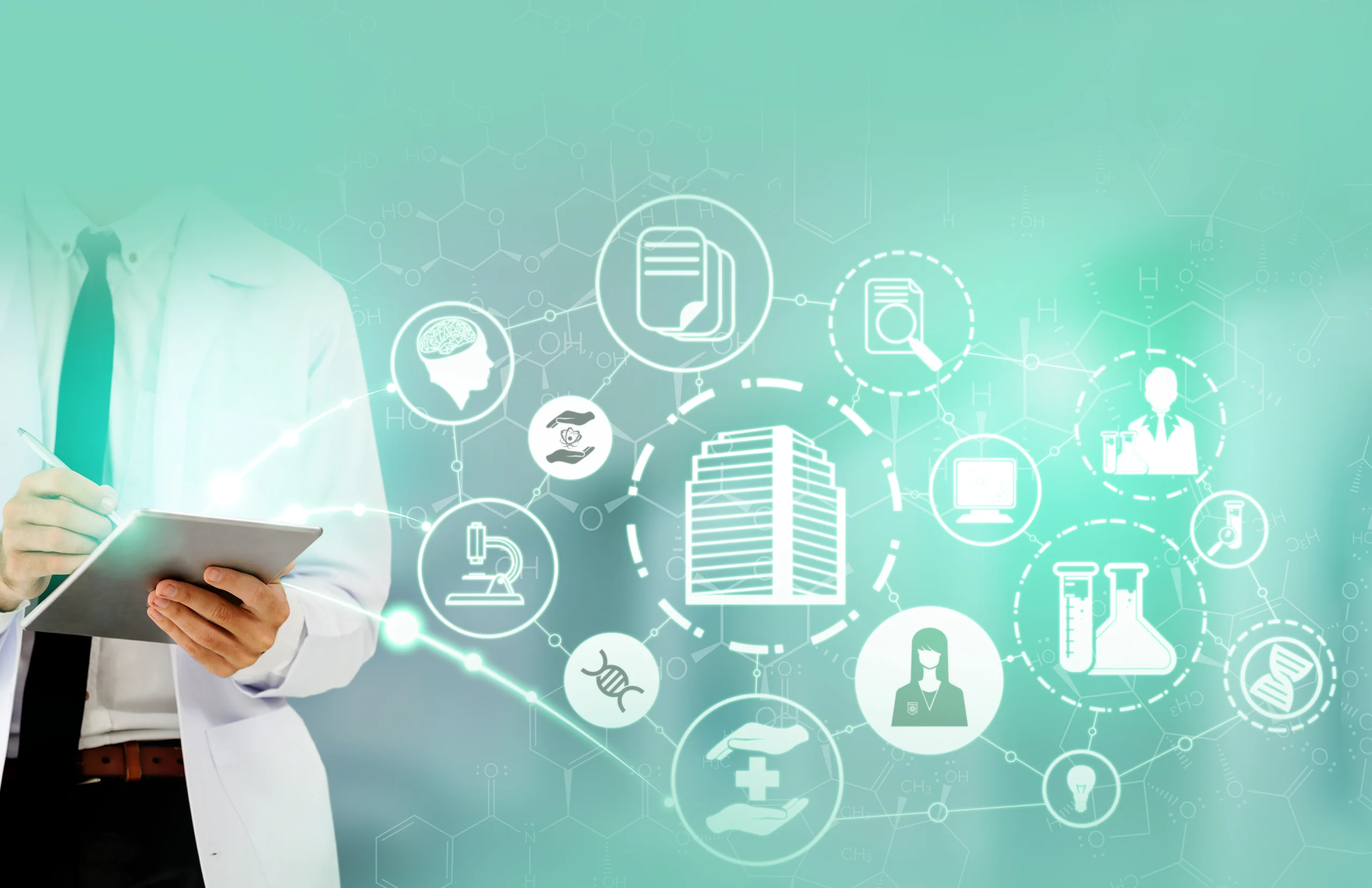The Internet of Things (IoT) refers to any physical device that is connected to the internet and capable of collecting and sharing data with other devices. This connection allows everyday objects, such as light bulbs, to be transformed into IoT devices, controlled through an app.
One of the benefits of IoT is the growth in cloud computing platforms, such as Azure IoT. Later in this blog, we will dive deeper into the relationship between IoT and cloud computing. But before we do that, let us take a moment to understand the significance of cloud computing and IoT.
What Is the Internet of Things and its Importance
The device you’re using to read this post, whether it’s a desktop, mobile, or tablet, is connected to the internet. This connection is a fundamental aspect of the Internet of Things (IoT), which aims to connect all the things in the world to the internet. With IoT, physical objects are equipped with sensors, software, and connectivity, allowing them to collect and exchange data, communicate with other devices, and provide real-time information and control. IoT is revolutionizing the way we live, work, and interact with the world around us.
The Internet of Things (IoT) offers numerous technical and practical advantages, including:
- Improved efficiency and automation: IoT devices can communicate with each other and with centralized systems to automate processes, resulting in improved efficiency and reduced manual intervention.
- Real-time data collection and analysis: IoT devices can collect and transmit vast amounts of data, which can then be analyzed in real-time to gain valuable insights into various systems and processes.
- Predictive maintenance: IoT devices can provide real-time monitoring of equipment and systems, allowing for predictive maintenance to be performed before failures occur, reducing downtime and increasing overall equipment effectiveness.
- Improved safety: IoT devices can be used to monitor and control dangerous equipment and processes, reducing the risk of accidents and improving overall safety.
- Remote monitoring and control: IoT devices can be monitored and controlled remotely, reducing the need for on-site personnel, and increasing the ability to respond to issues quickly and efficiently.
- Increased convenience: IoT devices can automate many everyday tasks, such as controlling lighting, heating, and cooling, making daily life more convenient and comfortable.
- Energy savings: IoT devices can be used to optimize energy usage, reduce waste, and lower costs.
- Increased accessibility: IoT devices can be used to enhance accessibility for individuals with disabilities, making it easier for them to perform everyday tasks and increasing their independence.
IoT is transforming the way we live and work, offering endless possibilities for growth and innovation.
Learn more about Emerging Industry-Specific IoT (Internet of Things) Trends to Rule in 2023
What is Cloud Computing?

Cloud computing is a technology that leverages the internet to allow its users to access shared computing resources, such as data storage, servers, networking, and software. This technology allows users to remotely manage, and access information stored in a virtual space called the “cloud.” With the help of cloud service providers, users can collect, store, and access their data from any device connected to the internet, enabling remote work. The use of cloud computing shifts the computational load away from the end-user’s device, resulting in a more efficient and streamlined computing experience.
Let us Understand Why Cloud Computing is Important-
According to a report on precedence research, the market size of global cloud computing was estimated to be worth USD 446.51 billion in 2022 and is projected to reach USD 1,614.10 billion by 2030, with a compound annual growth rate (CAGR) of 17.43% during the period of 2022 to 2030.
Consider a scenario where you have a groundbreaking application that has the potential to yield significant profits and deliver an exceptional user experience. To make this application a reality and widely accessible over the internet, various underlying infrastructure components such as servers, developers, and storage devices are required.
Procuring these components entails significant costs and poses various risks, as a substantial investment is needed to ensure the application’s proper functioning. In the event of the application’s success, the demand for additional servers to accommodate the growing user base will arise, resulting in increased costs. This is where cloud computing proves to be a valuable solution, providing numerous benefits in terms of storage and scalability.
Relation of IoT and Cloud Computing
The advancement of technology has resulted in the heightened requirement for managing, preserving, and retrieving substantial amounts of data. An integral aspect that contributes to the effectiveness of the Internet of Things (IoT) is its integration with cloud computing. Cloud computing facilitates the execution of computing tasks through internet-based services. This connection between the Internet of Things and cloud computing highlights their close relationship.
The Internet of Things and cloud computing differ in their functionality. Cloud computing delivers internet-based hosting services, while the Internet of Things links smart devices in the surrounding environment through the internet. The alliance of IoT and cloud computing creates a sturdy infrastructure for streamlined data processing, storage, and access.
What is the Azure Internet of Things (IoT) Solutions?
Azure Internet of Things (IoT) is a cloud platform offered by Microsoft as part of its Azure cloud computing portfolio. It provides a suite of services and tools specifically designed for the Internet of Things (IoT) scenario, aimed at helping organizations collect, process, analyze, and visualize data generated by connected devices.
Azure IoT provides an end-to-end solution for IoT, from device management and data collection to data analysis and visualization, enabling organizations to turn data from IoT devices into actionable insights. With Azure IoT services, organizations can develop and deploy IoT solutions with ease, scale as needed, and enjoy the benefits of a highly secure, globally available, and cost-effective cloud platform.
Some of the key features of Azure’s cloud services include:
- Provision of IaaS, PaaS, and SaaS
- Support for a broad range of operating systems, languages, and tools.
- Availability of 24/7 technical support.
- Pay-as-you-go pricing model, enabling users to only pay for what they use.
Why Use Azure IoT Services?
Azure is a universally accessible cloud platform, suitable for organizations of all sizes, from small startups to large Fortune 500 companies. It offers a broad range of innovative and business-critical services, delivering exceptional value and flexibility to users. With Azure, organizations can add new services and create new applications without worrying about the underlying infrastructure.
Some of the key benefits of using Azure IoT Services include
- Trouble-free application development: It provides a user-friendly platform for web application development.
- Application testing and evaluation: Azure IoT services offer a platform for evaluating and testing applications.
- Hosting and deployment: After testing, the platform can also assist in the hosting and deployment of applications.
- Virtual machine creation: Azure platform enables users to develop virtual machines in any configuration.
- Integration and synchronization: It helps in the integration and synchronization of virtual devices and directories.
- Metrics collection and analysis: Azure IoT platform provides tools for collecting and analyzing metrics, helping organizations understand what works and what does not.
- Large data storage: Offers a vast amount of data storage, enabling organizations to securely store and manage enormous amounts of data.
Concluding Lines
The impact of cloud computing on the way customers interact with connected products, access data, design platforms and applications, and manage network infrastructure is significant. It is the cornerstone of any digital transformation initiative. While the benefits of cloud migration, such as reduced operational costs, improved performance, and increased scalability, are well understood by enterprises, many organizations still struggle to develop a clear and effective cloud migration strategy.
eInfochips’ Snapbricks Cloud Optimization Assessment Framework (SCOAF) is designed to help customers optimize their cloud-based solutions across five critical areas: cost optimization, security, reliability, performance, and operational excellence. Our services include Azure native IoT development, Azure cloud-managed services, and Azure Security Operations Center for IoT. To learn more about our offerings, speak with one of our experts today.
















